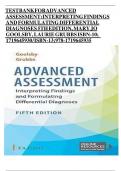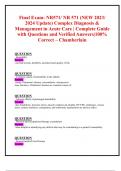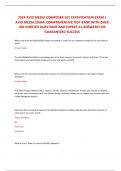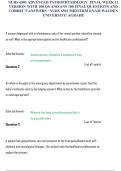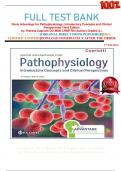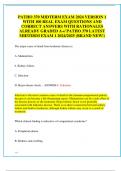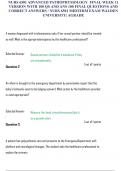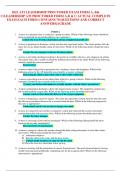Exam (elaborations)
TEST BANK For Advanced Assessment Interpreting Findings and Formulating Differential Diagnoses, 5th Edition by Goolsby, Verified Chapters 1 - 22, Complete Newest Version
TEST BANK For Advanced Assessment Interpreting Findings and Formulating Differential Diagnoses, 5th Edition by Goolsby, Verified Chapters 1 - 22, Complete Newest Version
[Show more]
